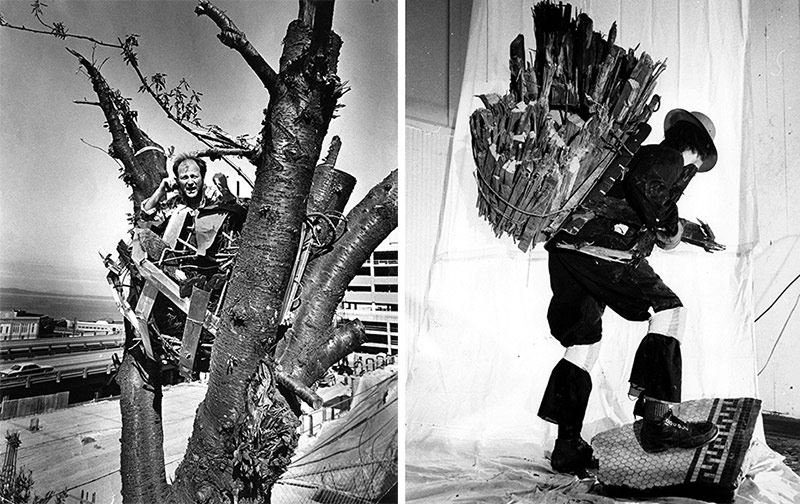 |
MEMBER SPOTLIGHT
April 24, 2023
This week we recognize Buster Simpson, and his prolific fifty plus year career as a public artist, performing art as pharmaceutical.
Hudson Headwaters Purge, 1991 (color) and Purge Projectile, 1983 (black & white) comprise The Purge Diptych (above), two action performances with common allegories of mender and meddler. Purge Projectile was staged on a construction site in lower Manhattan with the World Trade Center as backdrop. Here, the naked provocateur confronts the citadel of corporate consumption by slinging limestone, with its purging qualities, intending "agitation as antidote." For Hudson Headwaters Purge, numerous 24" diameter by 3" thick limestone disks were submerged at the headwaters of the Hudson River, just downstream from a barren Superfund site. For each, limestone serves as mender by purging acid from bodies of water and as agit prop to meddle with irresponsible consumption, the source of CO2 that results in human-induced climate change. The work has also been called "River Rolaids" or "Tums for Mother Nature by the media;" and to the artist as "Therapist." Pharmaceutically, limestone neutralizes or "sweetens" the pH of acidic waters. The process of adding limestone to acidic rivers is a mitigation practice often deployed by environmental agencies.
click images for more info/credits
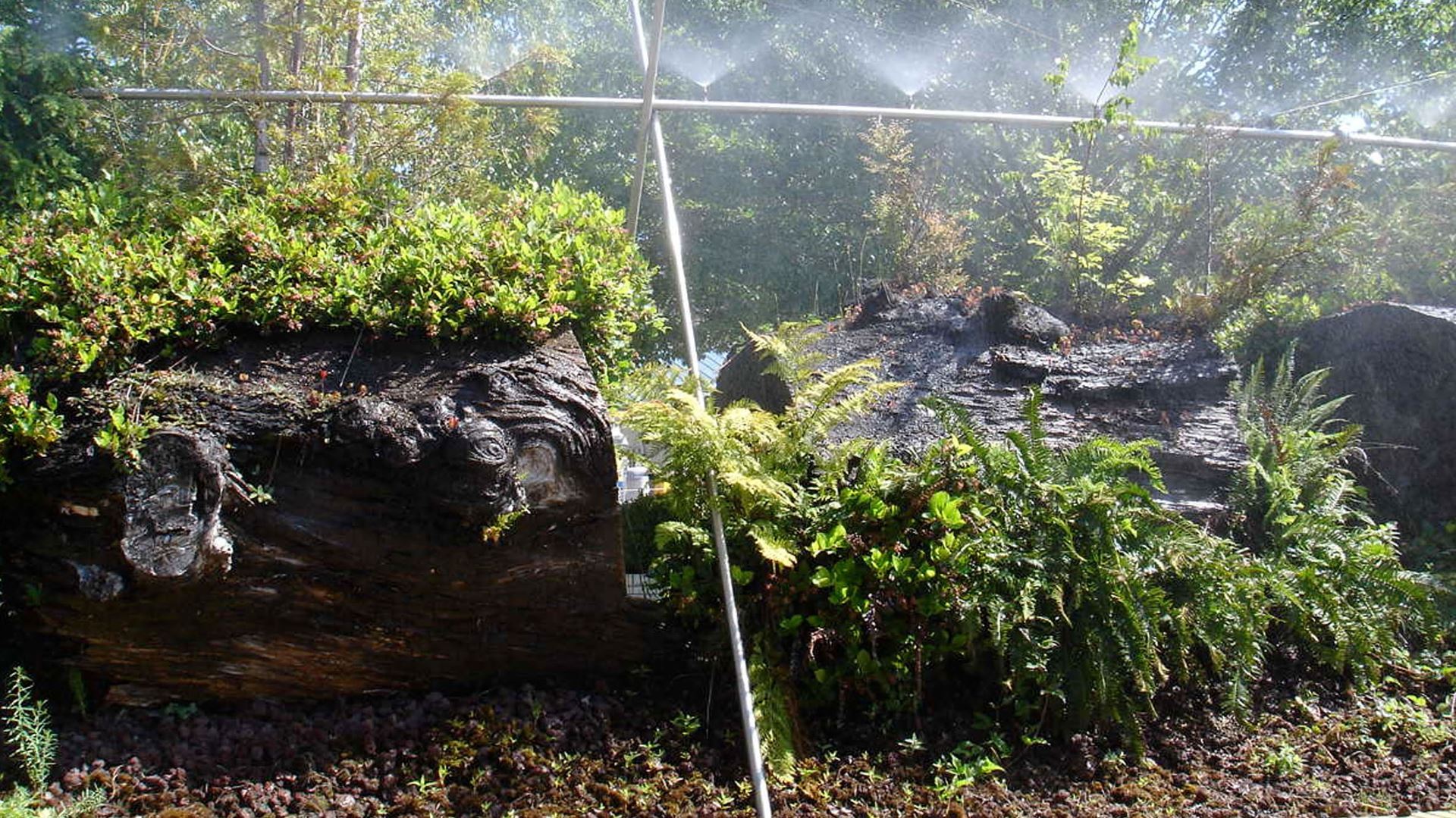
Host Analog, 1991 (above) is comprised of eight segments of a Douglas fir tree that lived for 600 years in the wilderness to the west of Wy'east Mountain, now also known as Mount Hood. The tree, felled and bucked, was deemed unsuitable for lumber sometime in the 1960s and was left to decay in the forest. In 1990, it was rediscovered in the Bull Run Watershed (Portland's water source since 1895). Host Analog continues its relationship with the Bull Run as it is misted daily with water brought to the City from its original home. It is an urban nurse log, serving to exemplify a living laboratory of diversity, adaptability and resilience. When the segmented tree was transported to the plaza of the Oregon Convention Center, it was an active nurse log, carrying with it a native ecosystem. Over time, the forest landscape growing on Host Analog has been diversified with urban plants self-seeding and taking root, enabling a unique laboratory and creating an aesthetic that confronts the notion of what is "natural" with the elements of chance and change. This dynamic artwork will never be considered complete, as it will continually evolve.
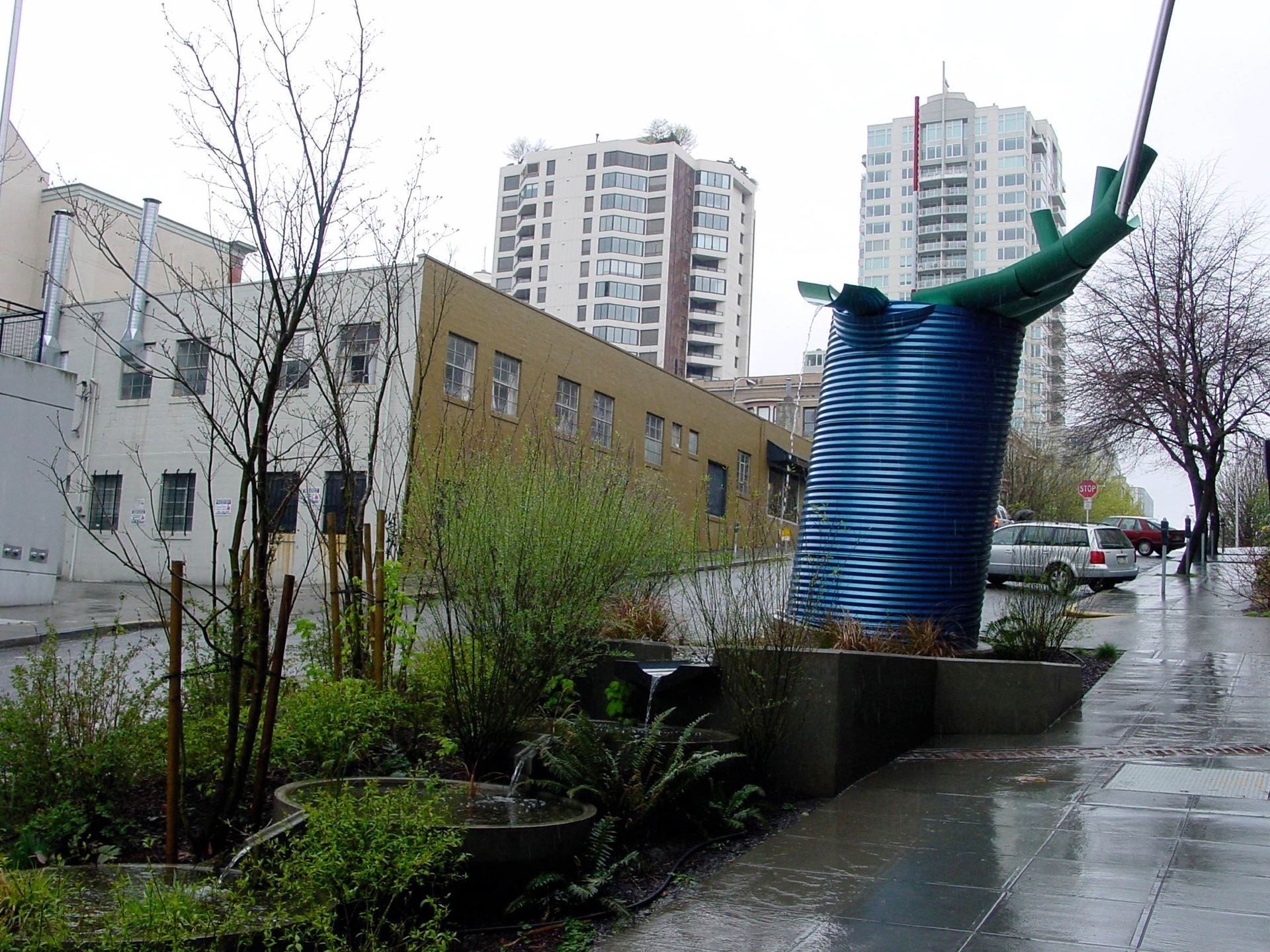
Beckoning Cistern, 2003 (above) is an aluminum cistern that collects roof watershed from the 81 Vine Street building in Seattle, Washington. Water is directed from the roof via downspout then through the extended index finger of an outstretched hand and into the 10 x 6 feet diameter tank "cuff" before eventually making its way down Vine Street to the Cistern Steps. The gesture of the outreaching finger suggests that of the Creation of Adam by Michelangelo from the Sistine Chapel in Rome.
The Brightwater Art Master Plan for the Brightwater Treatment System, 2003 (below) proposed a philosophical approach, criteria, guiding principles and art opportunities for the wastewater treatment plant and conveyance corridor in King County, Washington and was intended to provide guidance to future artists involved in the project and to inform the general public about the context for art in the system. This is an early example of an artist taking an active role in developing innovative opportunities for ecological artists to do public art projects.
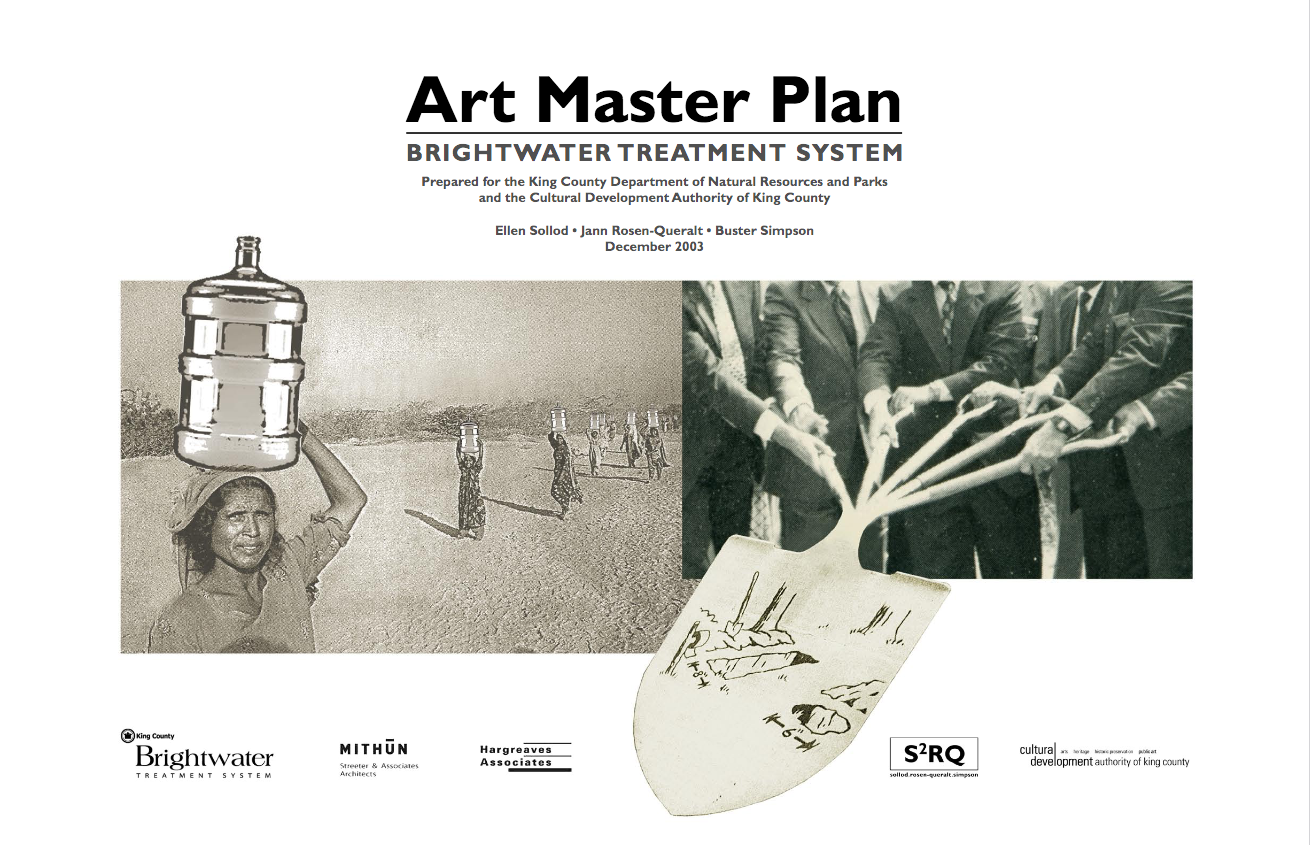
Simpson's most recent public art project Anthropocene Migration Stage, completed in 2022 (below) is in response to the Habitat Beach, built in conjunction with the new Elliott Bay Seawall. Simpson strategically situated two sets of immediately useful as well as forward thinking sculptural placements along the Seattle Waterfront promenade, Anthropomorphic Triapods and SeaBarrier to both furnish a public amenity and a staging area of accessible materials to migrate inland as needed, mitigating future rising sea encroachment. Anthropomorphic Triapods act immediately as seating and interactive play objects, and stand ready to be engaged as shoreline habitat anchors and wave attenuators. This promenade location was once a principle boat landing site for the Duwamish Tribe. SeaBarrier is made up of multiples of six-foot long precast concrete wall segments, with a faux sand bag motif, that utilize a flexible interlocking modular system typical of a Jersey barrier. All port cities are on the edge of rising tides, Simpson has inscribed the names of some of them along the bottom of SeaBarrier in a gesture of commonality.
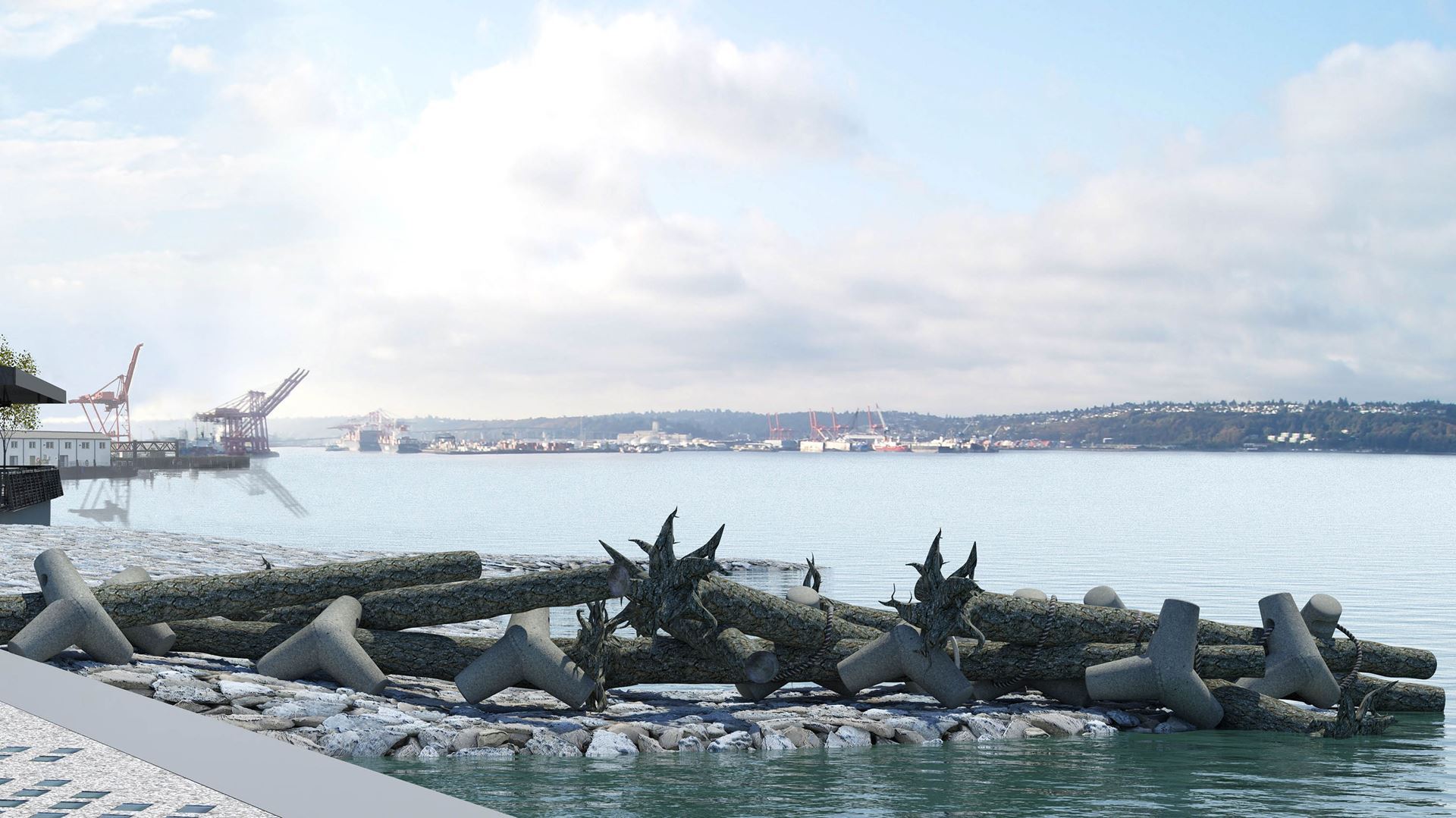
Buster Simpson has been active as an artist since the late 1960s, working on major infrastructure and planning projects, site specific sculptures, museum installations, and community interventions. Simpson received a MFA in 1969, and later, the Distinguished Alumni Award in Architecture and Design, University of Michigan. He's a recipient of numerous awards, among them, NEA fellowships and the Americans for the Arts Public Art Award in 2009. His work engages social actions and sustainable opportunities often considered "poetic utility." Humor and rich metaphors distinguish his work, with deceptively simple sculptures. In 2013, the Frye Art Museum mounted a major retrospective of Simpson's work. In May of 2015 and 2016, Simpson conducted Rising Waters Confab at the Robert Rauschenberg Foundation on Captiva Island, Florida, which brought together a collaborative team of scientists, artists, land use specialists, and activists to create approaches to resilience and the graceful migration of people and biota. Simpson has exhibited at The New Museum, MoMA PS1, Seattle Art Museum, Frye Art Museum, The Hirshhorn Museum, Capp Street Project, and Museum of Glass. His work is included in numerous public commissions throughout North America. www.bustersimpson.net
Featured Images (top to bottom): ©Buster Simpson, The Purge Diptych, Hudson Headwaters Purge, 1991, and Purge Projectile, 1983, both in New York; HOST ANALOG, 1991, Oregon Convention Center, Portland, Oregon, stainless steel irrigation, basalt, old growth (windfall) logs, city water, porcelain enamel signage, 17' x 90' x 30'; Beckoning Cistern, 2003, Growing Vine Street, Seattle, Washington, painted aluminum, stainless steel, 34' x 6' diameter (including downspout); Brightwater Art Master Plan for the Brightwater Treatment System, 2003, King County, Seattle; Anthropocene Migration Stage, 2022, Elliott Bay Seawall, Seattle, Washington; portraits of the artist as Woodman, 1974.
